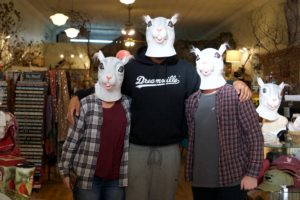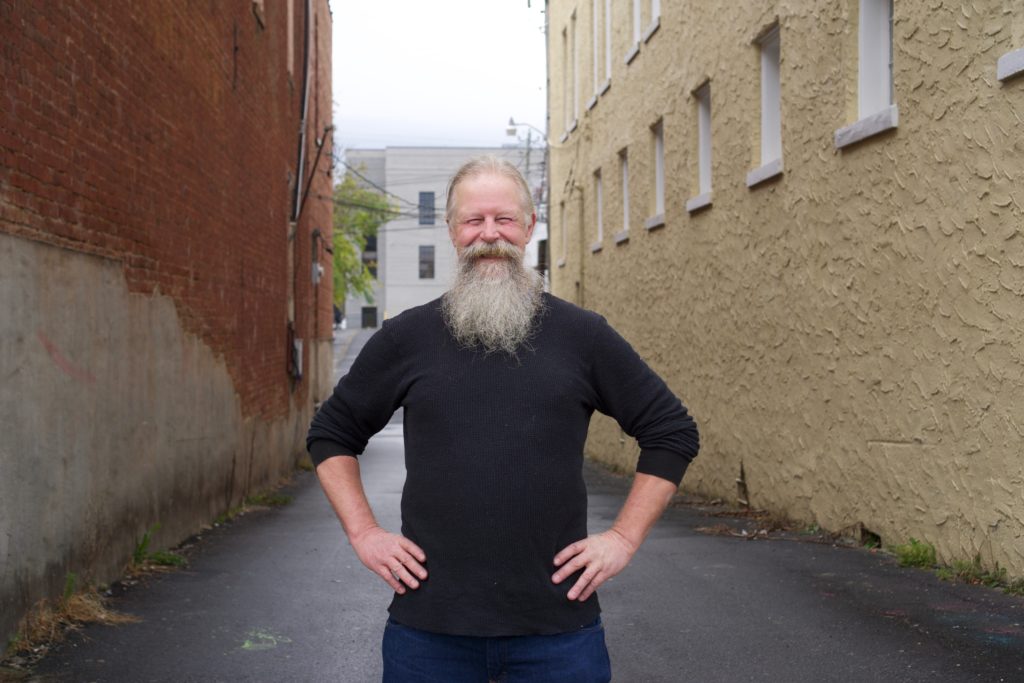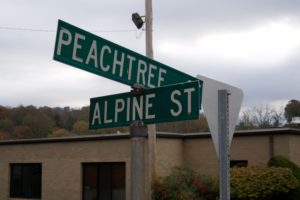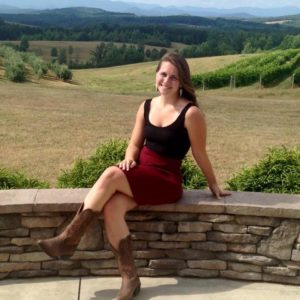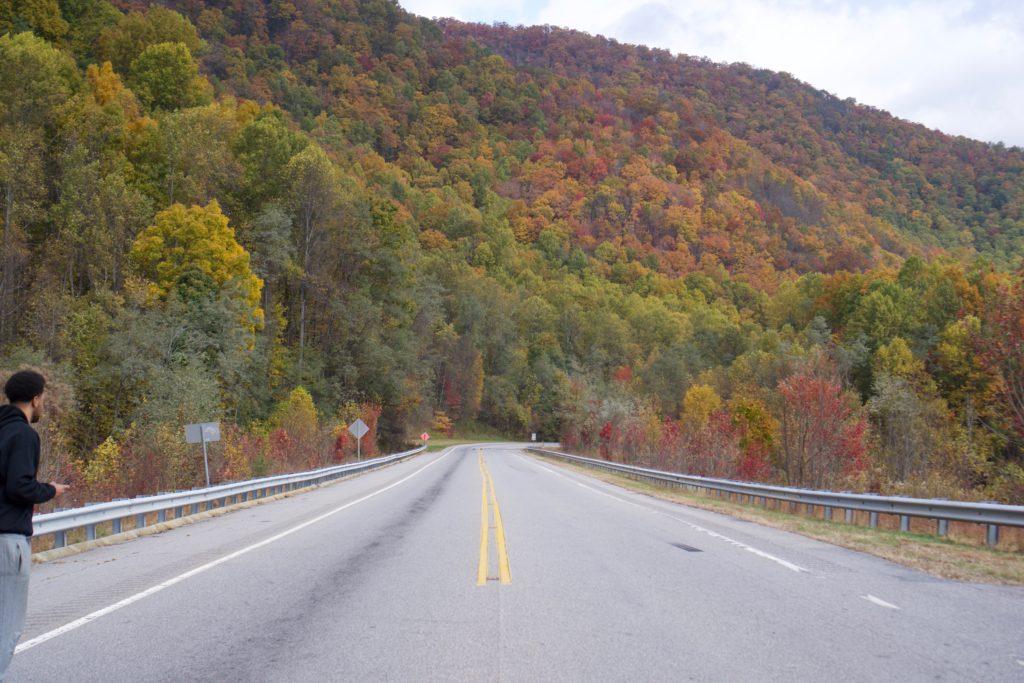
By Jake Hackman, Johvonn Smith, Jamie Angle, Kate Sieber, 2017
History:
As Bruce Springsteen sang in his classic song ‘Thunder Road’, “these two lanes will take us anywhere,”- these two lanes referring to North Carolina’s famous Highway 64. An uncharacteristically beautiful highway, people often forget it’s actually a highway- the layout of the road seems almost like a mistake. Put delicately, if Highway 64 was designed by an engineer or anyone of the like, it’s hard to tell. The road follows more of a wandering path than anything, it winds through the length of North Carolina in a way that mimics the travelers that came long before us. Every inch of Highway 64 is laden with the history of those that came before and remains a vital part of North Carolina past, present, and future.
Highway 64 was conceived during the same time as another famous highway, Route 66. In 1926, the creation of the US Highway System sparked the development of both of these revolutionary roads. While Route 66 was deemed inactive in 1985, Highway 64 remains a trusty method of travel for North Carolinians or anyone just passing through. Thus North Carolina can stake its claim as the state containing more miles of maintained roads than any other state in the country. As the USA’s 8th longest-running highway at 2,326 miles in total, Highway 64 finally comes to an end all the way in Teec Nos Pos, Arizona- far away from its start in Nags Head, North Carolina.
Highway 64 represents much more than just a road- it stands for the progress of a station and the march West that inspired hundreds of thousands of people out in search for more. Originally intended to further the journey out West, Highway 64 continues to inspire individuals to experience new adventures. Winding through towns you might normally pass through, Highway 64 allows people to uncover the hidden gems North Carolina has to offer. These small towns and unique sites offer the real stories and represent the true heart of the country. Highway 64 continues to serve as a reminder that taking a back road doesn’t have to be boring- it can expose you to new people and places you might never get to experience otherwise. On Highway 64, history is alive and well.
Driving down Highway 64 is a unique experience, here is what it is like today:
Passenger: Johvonn Smith
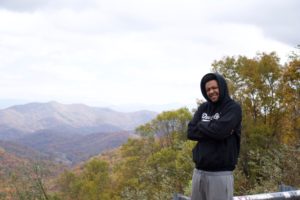 Our first day was full of excitement, we were not sure what to expect on the drive. We
Our first day was full of excitement, we were not sure what to expect on the drive. We
spent the majority of the drive talking about what to expect, things we were looking forward to,
and also finalizing times that we intended to spend in each respective city. The excitement was
quickly ripped away after we realized we made the mistake of putting in the wrong address in the
GPS, adding another hour and a half to a drive that was already long enough. We continued
driving along the dark winding road until we finally reached our destination, just to realize that
everything was closed. After settling for eating food from the casino, we continued to finalize
plans for the next day and called it a night.
On Friday, our first full day on Highway 64, there was a lot to take in. With no
expectations, I was not sure what to expect on the drive, but I was quickly surprised by how
much there was to look at. No more than five minutes into the drive, there was plenty of open
land, beautiful trees, and more cows than you could ever imagine. Most importantly, I was able
to see places that were still untouched, rather than surrounded by skyscrapers and other man-
made objects. Highway 64 was surrounded by mountains, winding roads, and orange and yellow
leaves. Throughout the drive, my head was constantly turning, as I tried not to miss anything that
may have been important to see. Several times along the way there were sites that were so
amazing that we could not resist stopping in order to take some pictures. Endless views of
mountains, trees, farms, and cars every so often made for a very peaceful and relaxing drive, at
least from the passenger seat.
After being in the car for about half of the day, I switched to the back seat. Surprisingly,
this gave me a totally different perspective of the mountains. I had a clear view of both sides of
the road from the back, while also being able to get a better view of everything that was behind
us. Similarly to what I saw earlier, we were still on a winding road. It felt like it was going on
forever, but I never thought “I cannot wait to get out of the car.” There was a peacefulness on
highway 64 that allowed me to enjoy everything the mountains of North Carolina had to offer,
and lose track of time in the process so that I lived in the moment. I imagine the mountains being
a place to unwind or reset so that you can just enjoy everything the world has to offer. I would
take the ride again to experience the peace that highway 64 gave me.
Passenger: Jamie Angle
 The winding road of Highway 64 is a beautiful drive that takes you away from the hustle and bustle of city life. It is remote enough that you can enjoy scenery without much worry of traffic. While this is true, it is also civilized enough that you rarely need to worry about the drive to the nearest gas station. The drive through the mountains on Highway 64 is beautiful in the fall. While we drove, we peered out the windows at the leaves along the side of the road, which had turned various shades of gold, orange and red. When a gust of wind blew, the leaves that had already fallen were thrust into the air and surrounded our car like confetti. From the backseat of the car, I could watch this natural confetti surrounding us through the side windows. Contrary to popular belief, the backseat of a car has its advantages. One of these advantages is that the backseat passenger has plenty of room, at least I did. Because I was the only one in the backseat, I could put my legs up on the seat next to me and sleep if necessary. This was made easier by the fact that voices did not carry back to me as much. Therefore, the boys up front could continue their conversation without concern for disturbing me.
The winding road of Highway 64 is a beautiful drive that takes you away from the hustle and bustle of city life. It is remote enough that you can enjoy scenery without much worry of traffic. While this is true, it is also civilized enough that you rarely need to worry about the drive to the nearest gas station. The drive through the mountains on Highway 64 is beautiful in the fall. While we drove, we peered out the windows at the leaves along the side of the road, which had turned various shades of gold, orange and red. When a gust of wind blew, the leaves that had already fallen were thrust into the air and surrounded our car like confetti. From the backseat of the car, I could watch this natural confetti surrounding us through the side windows. Contrary to popular belief, the backseat of a car has its advantages. One of these advantages is that the backseat passenger has plenty of room, at least I did. Because I was the only one in the backseat, I could put my legs up on the seat next to me and sleep if necessary. This was made easier by the fact that voices did not carry back to me as much. Therefore, the boys up front could continue their conversation without concern for disturbing me.
On the flip side, the lack of carrying sound made it difficult to also participate in conversation when I was not sleeping. It is only acceptable to ask “what?” so many times in a conversation before it gets annoying. The other major disadvantage to the backseat pertains to the fact that I get carsick. Motion sickness can be helped when a person is able to see where it is they are headed, however, from the backseat, I was only able to watch the world around me from a side view. A little while into the ride I found that I was not feeling my best, and had to switch seats. Therefore, the backseat of the car along highway 64 is relaxing in its ability to watch the leaves and nature unfold around the car. However, it can also seem a bit lonely because of the difficulty to carry conversation with those in the front of the car. I would not recommend this seat to those who get carsick. The twists and turns can be difficult to see around from the front, so the back makes it close to impossible to have proper visibility. The drive down Highway 64 is a beautiful experience no matter what seat you take.
Driving: Jake Hackman
There’s something about being on the road that encourages forgetfulness, and dissuades thinking. It is where mindlessness mimics the road, wandering through zip codes and county lines, ignoring the past and future, living only in the present. There aren’t too many roads near me anymore where that happens. Most are filled with too many cars, too many people, and too much thinking.
I distinctly remember the pleasure that came from the simple act of driving. Something about being behind the wheel, with full control of destination was empowering and humbling. It often times is the catalyst that opens you to a world much bigger than you realized. It fosters intuitive exploration that can only be satisfied by the act of going. As I have gotten older, I have come to appreciate the act of going, and what an influence it has had on me. It has pushed my passion for travel further, posing more questions about my personal direction.
There aren’t too many highways that will keep you from running into McDonalds and motels. Most exits contain the standard Shell and Kangaroo gas stations, a few fast food restaurants, and of course a southern staple, Waffle House. As you begin to distance yourself from the light pollution that drowns most cities along North Carolina highways, you begin to notice a distinct calmness on the road.
Highway 64, one of the oldest of these roads that ventures west, deep into the Nantahala National Forest. Its curves are unlike other terrains, whipping you around sharp bends, and spitting you out into enormous valleys sprinkled with trees draped in moss. As the sun skips across the sky it meets the road in the dusk hours, beaming light through the windows of the car, sending reflections scattering across the ceiling. Once gone, the darkness infects the road and limits visibility down to shadows. The curves of the road begin to slim as you rise further and further up mountainsides, only to discover that this is one of many mountains covering the diverse region of the highway.
I hadn’t driven in mountains since I was in high school, and for good reason. The curves and bends, intertwined with the constantly-changing speeds had my anxiety at an all-time high. All the great things I loved about driving went out the window, both metaphorically and literally, when I trekked through the mountains. But there was something different about the mountains on Highway 64. The anxiety and fear went away, and comfort set in. The curves came naturally as the wheel spun over itself, my foot did not hesitate on the break, and my focus seemed to stray from the road and center on the land that was in front of me. The rise and fall of the mountains were methodical as each valley was met with quaint houses and rolling hills.
It was on the road that I was reminded of the act of going. That sometimes it doesn’t necessarily mean that going will be easy and or comfortable, but it is in that lack of comfortability that discoveries are made.


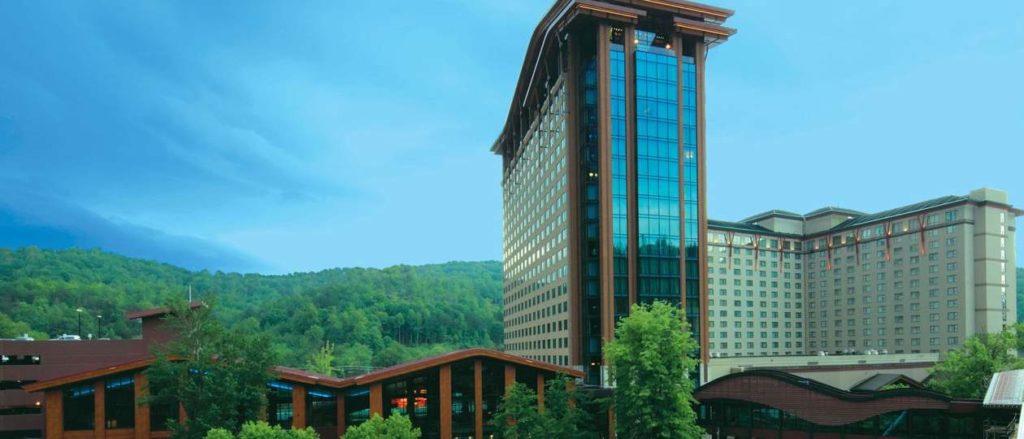
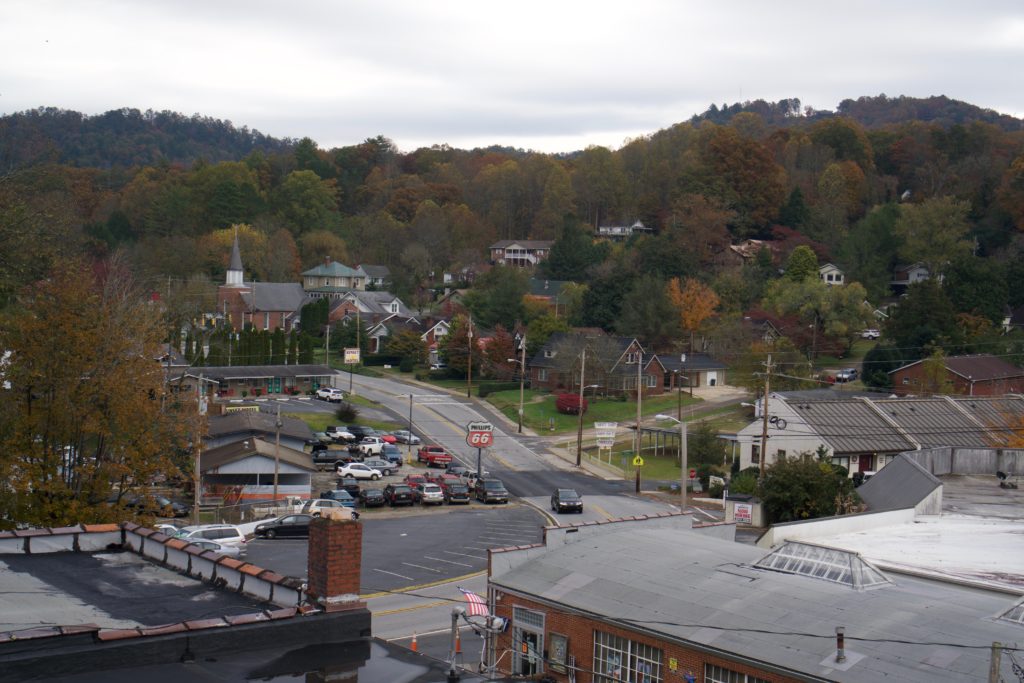
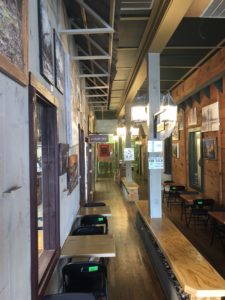
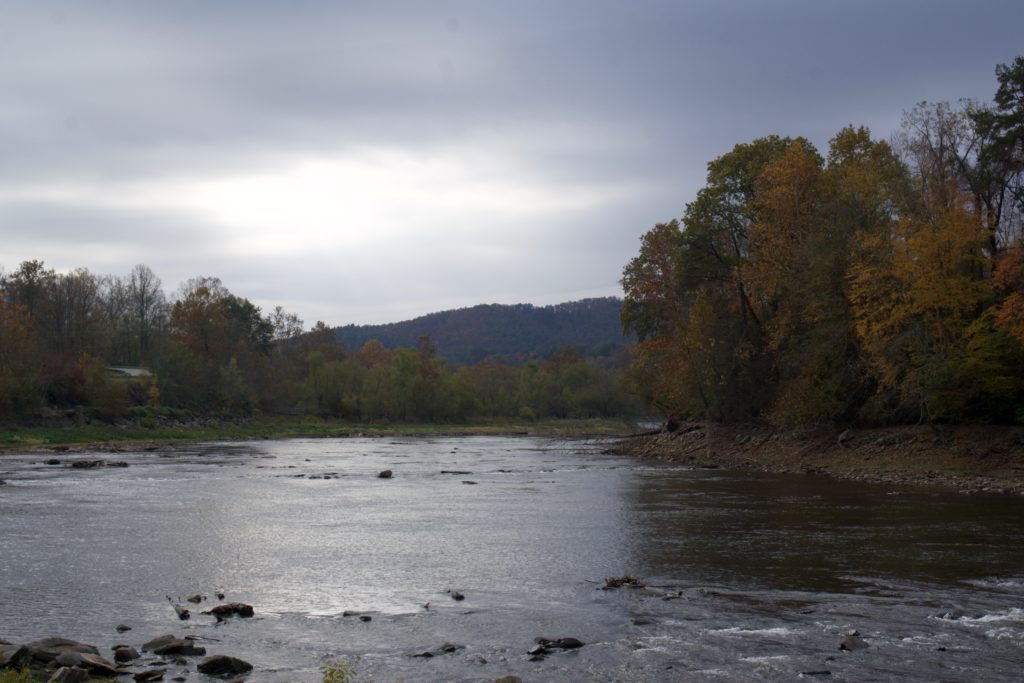
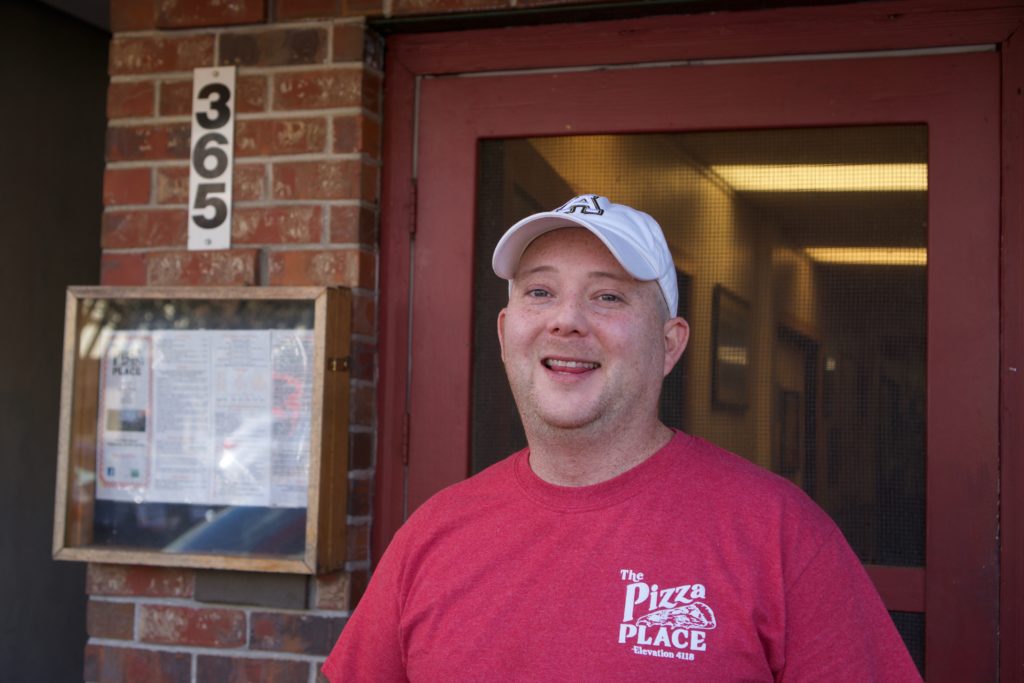
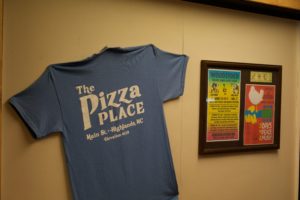 Six years later and McCall has seen the effects ripple through his evironment. From employing local students throughout the summers, to donating to the schools and sports teams, McCall has his hands in the community outside of The Pizza Place. He also acknowledges his success not only to the dedicated people who reside in Highlands year around, but also the tourists who bring in the largest influx of business each year.
Six years later and McCall has seen the effects ripple through his evironment. From employing local students throughout the summers, to donating to the schools and sports teams, McCall has his hands in the community outside of The Pizza Place. He also acknowledges his success not only to the dedicated people who reside in Highlands year around, but also the tourists who bring in the largest influx of business each year.
